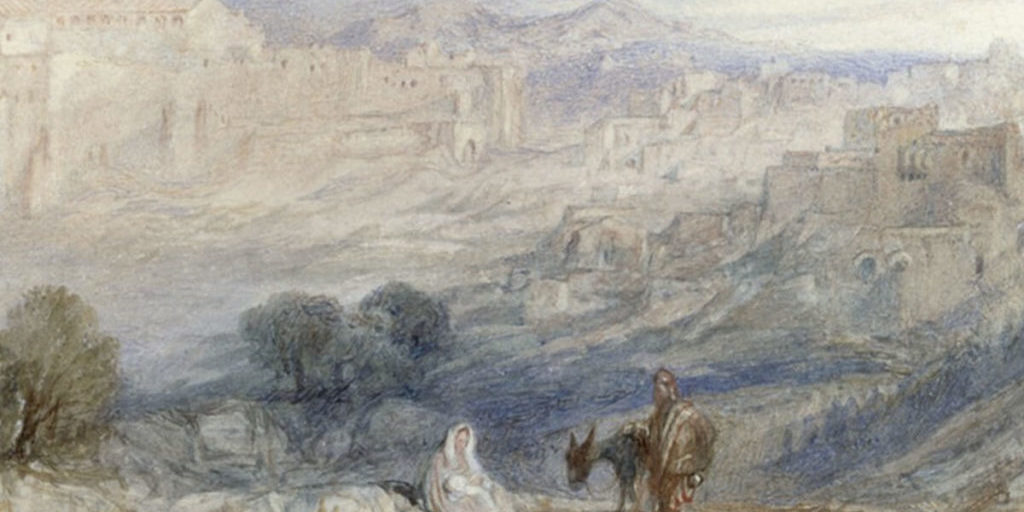
How to Read Hosea Theologically: Part 2
Theological Interpretation of Scripture[1]
The Two-Testament Bible has the canonical function of reminding the Church that God has spoken and that the Scripture of the Church is the Word of God. Each part of Scripture is the Word of God, is authoritative, and points to the fullness, reality, transcendence, and holiness of God. Scripture is God’s transcendent witness to himself. He has spoken, inspired the recording of his word, and has revealed his Being.
The canonical connections invite attention to theological connections. Each text witnesses to a larger whole, and the most transcendent context of the text is its witness to God. Hence, the witness of Moses and the Prophets is to be understood horizontally throwing light on the geographical, historical, social, and literary world. It is also a vertical witness to the divine ontology. At the heart of each book lies a witness to who God is. The theologian B. B. Warfield argues that the biblical doctrine of the Trinity brings out the significance of the text, “to speak without figure, the doctrine of the Trinity is given to us in Scripture, not in formulated definition, but in fragmentary allusions; when we assembled the disjecta membra into their organic unity, we are not passing from Scripture, but entering more thoroughly into the meaning of Scripture”[2].
Of course, the contents and context of the text are important. A close analysis of the text suggests interpretive issues which invite further analysis that may lead the reader to consult Hebrew dictionaries, grammars, syntactic analysis, and commentaries. Ultimately the exegesis of the Word leads to the Word, the Lord Jesus Christ. In other words, the text bears witness to the nature of the revelation of God in Jesus Christ. Even though God is hidden and incomprehensible, every word of the text, as Augustine argues, points symbolically to the Word, Jesus Christ. Even though God is hidden and incomprehensible, every word of the text, as Augustine argues, points symbolically to the Word, Jesus Christ. Click To Tweet
Unified Canon
The message of Hosea opens the door to Moses and to the Prophets, as well as to the Christ and his Apostles. It must be understood within the socio-historical world in which the prophet ministered (ca. 750 BC). Hosea, the son of Beeri, received God’s word during the reigns of Uzziah, Jotham, Ahaz, Hezekiah, kings of Judah, and of king Jeroboam of Israel (1:1). The geo-historical world of Hosea shapes the surface interpretation of the book. But reading Hosea in association with the canonical divisions of scripture enhances the theological understanding of Hosea.[3] After all, the Lord has spoken through his servants, the Prophets (Heb. 1:1).
The New Testament authors expand and contextualize the message of Moses and the Prophets in the light of God’s revelation in Jesus Christ (Heb. 1:1-2; 1 Pet. 1:10-12). The Two-Testament Bible, while complex, contributes to a unified vision or canon. John Webster envisions reading of the parts in the light of the whole and the discovery of the parts in relation to each other,
Rather, the canon is a single (though complex) entity whose individual textual elements are both mutually interpretive, and also to be understood in the light of the whole of which they form parts. … (T)hey are also determined by the whole to which they belong. Moreover, the canon may be read as a whole, derivative as it is from a single (though manifold) act of divine communication, and its individual texts are to be interpreted with reference to that whole.[4]
Synoptic Vision
In reading synoptically the reader dwells in a text while seeing other texts that have a bearing on it. It is a form of cognitive imagination, as defined by Vanhoozer,
By imagination I mean the power of synoptic vision – the ability to synthesize heterogeneous elements into a unity. The imagination is a cognitive faculty by which we see as a whole what those without imagination see only as unrelated parts. … Where reason analyzes, breaking things (and texts) up into their constituent parts, imagination synthesizes, making connections between things that appear unrelated.”[5]
Such a reading encourages associations that are forward looking but also retrospective.[6] The metaphorical world thus created readily opens itself to wisdom perspectives. Such a world is not an idealization of the present, but an experience of the transcendent in the present.
*This is part two of a three part series. See parts one and three.
Endnotes
[1] Kevin J. Vanhoozer, “Toward a Theological Old Testament Theology,” in Interpreting the Old Testament Theologically: Essays in Honor of Willem A. VanGemeren, ed. Andrew T. Abernethy (Grand Rapids: Zondervan, 2018), 293-317.
[2] B. B. Warfield, “Trinity,” The International Standard Bible Encyclopedia, # 1. Emphasis mine.
[3] See Christopher R. Seitz, Prophecy and Hermeneutics: Toward a New Introduction to the Prophets (Grand Rapids: Baker, 2007).
[4] John Webster, “Canon,” in Dictionary for Theological Interpretation of the Bible, ed. Kevin J. Vanhoozer (Grand Rapids: Baker Academic, 2005), 100.
[5] Kevin Vanhoozer, “Lost in Interpretation: Truth, Scripture, and Hermeneutics,” in Whatever happened to Truth? ed. Andreas Köstenberger. Wheaton: Crossway, 2005), 121.
[6] Brevard S. Childs, “Retrospective Reading of the Old Testament Prophets” in ZAW 108, 1996, 362-77.

